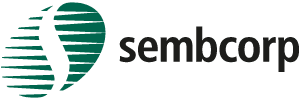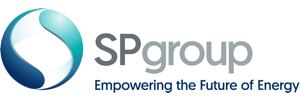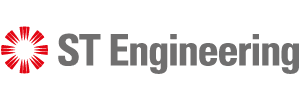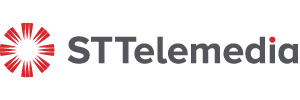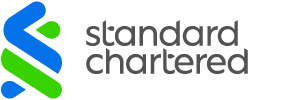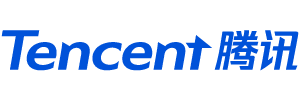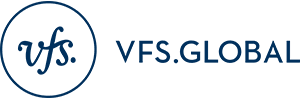Performance & Portfolio
We ended the year with a net portfolio value of S$434 billion3. Marking our unlisted portfolio to market would provide S$35 billion of value uplift and brings our net portfolio value to S$469 billion.
S$434b
Net portfolio value
Up S$168 billion over the last decade
(as at 31 March)
Net Portfolio Value (S$b)
Temasek Net Portfolio Value since Inception
- Market value
- Shareholder equity
- Shareholder equity excluding mark to market movement4
1 Incorporation of Temasek on 25 June 1974.
2 Financial year 75 began on 25 June 1974 and ended 31 December 1975.
3 Financial year-end was changed from 31 December before 1993 to 31 March from 1994 onwards.
4 From the financial year ended 31 March 2006, the accounting standards require sub-20% investments to be marked to market.
Our portfolio comprises both listed and unlisted investments. Over the last decade, our unlisted portfolio generated returns of 7% per annum, delivering higher returns than our listed portfolio.
Our net portfolio value of S$434 billion is based on valuing our listed investments at share prices as of the last trading day of our financial year and our unlisted investments at book value less impairment. Book value refers to Temasek’s cost of investment plus our share of the investee company’s profits or losses, changes in other equity reserves, minus write downs (if any).
Marking our unlisted portfolio to market, based on market approaches such as investee company’s recent funding round, market multiples of comparable public companies, and/or income approach such as the discounted cash flow model, would provide S$35 billion of value uplift, which is approximately 16% of our unlisted portfolio value as at 31 March 2025.
S$52b
Invested during the year
Invested S$350 billion over the last decade
(for year ended 31 March)
Investments & Divestments (S$b)
- Investments
- Divestments
- Net Investment/(Divestment)
5%
10-year return to shareholder
Total shareholder return of 14% since inception
(as at 31 March 2025)
S$ Total Shareholder Return (%)
Total Shareholder Return (TSR) is a compounded and annualised measure, which includes dividends paid to our shareholder and excludes investments made by our shareholder in Temasek’s shares. Our TSR over different time periods is a snapshot of our performance, with the longer time periods being more representative of our performance as a long-term investor.
As at 31 March 2025, our Singapore dollar4 10-year and 20-year TSRs were 5% and 7% respectively.
S$10b
Dividend income
Average annual dividend income of S$9 billion over the last decade
(for year ended 31 March)
Dividend Income (S$b)
Anchored in Asia, our S$434 billion5 portfolio has 66% underlying exposure to developed economies.
(as at 31 March)
| 2025 | 2024 | 2023 | 2022 | 2021 | 2020 | 2019 | 2018 | 2017 | 2016 | |
|
Singapore
|
52 | 53 | 54 | 54 | 49 | 52 | 55 | 54 | 60 | 60 |
|---|---|---|---|---|---|---|---|---|---|---|
|
China
|
11 | 13 | 15 | 15 | 21 | 23 | 20 | 20 | 19 | 20 |
|
India
|
5 | 5 | 3 | 3 | 3 | 2 | 2 | 2 | 3 | 2 |
|
Asia Pacific (ex Singapore, China & India)
|
2 | 2 | 2 | 2 | 2 | 3 | 4 | 5 | 4 | 5 |
|
Americas
|
19 | 17 | 16 | 17 | 15 | 12 | 11 | 12 | 8 | 7 |
|
Europe, Middle East & Africa
|
11 | 10 | 10 | 9 | 10 | 8 | 8 | 7 | 6 | 6 |
| 2025 | 2024 | 2023 | 2022 | 2021 | 2020 | 2019 | 2018 | 2017 | 2016 | |
|
Singapore
|
27 | 27 | 28 | 27 | 24 | 24 | 26 | 27 | 29 | 29 |
|---|---|---|---|---|---|---|---|---|---|---|
|
China
|
18 | 19 | 22 | 22 | 27 | 29 | 26 | 26 | 25 | 25 |
|
India
|
8 | 7 | 6 | 6 | 5 | 4 | 5 | 4 | 5 | 5 |
|
Asia Pacific (ex Singapore, China & India)
|
11 | 12 | 11 | 12 | 12 | 14 | 15 | 18 | 17 | 19 |
|
Americas
|
24 | 22 | 21 | 21 | 20 | 18 | 16 | 14 | 14 | 12 |
|
Europe, Middle East & Africa
|
12 | 13 | 12 | 12 | 12 | 11 | 12 | 11 | 10 | 10 |
1 Distribution based on underlying assets.
| 2025 | 2024 | 2023 | 2022 | 2021 | 2020 | 2019 | 2018 | 2017 | 2016 | |
|
Transportation & Industrials2
|
22 | 22 | 23 | 22 | 19 | 18 | 19 | 19 | 20 | 21 |
|---|---|---|---|---|---|---|---|---|---|---|
|
Financial Services
|
22 | 21 | 21 | 23 | 24 | 23 | 25 | 26 | 25 | 23 |
|
Telecommunications, Media & Technology
|
20 | 18 | 17 | 18 | 21 | 21 | 20 | 21 | 23 | 25 |
|
Consumer & Real Estate
|
13 | 15 | 16 | 15 | 14 | 17 | 17 | 16 | 17 | 17 |
|
Life Sciences & Agri-Food
|
7 | 9 | 9 | 9 | 10 | 8 | 7 | 6 | 4 | 4 |
|
Multi-Sector Funds
|
9 | 9 | 8 | 8 | 8 | 8 | 8 | 8 | 8 | 7 |
|
Others (including Credit)
|
7 | 6 | 6 | 5 | 4 | 5 | 4 | 4 | 3 | 3 |
1 Distribution based on underlying assets.
2 The Transportation & Industrials sector includes investments in Energy & Resources.
| 2025 | 2024 | 2023 | 2022 | 2021 | 2020 | 2019 | 2018 | 2017 | 2016 | |
|
Liquid & sub-20% listed assets1
|
29 | 29 | 27 | 28 | 38 | 37 | 36 | 36 | 33 | 31 |
|---|---|---|---|---|---|---|---|---|---|---|
|
Listed large blocs (≥ 20% and < 50% share)
|
11 | 9 | 9 | 8 | 7 | 5 | 10 | 10 | 9 | 10 |
|
Listed large blocs (≥ 50% share)
|
11 | 10 | 11 | 12 | 10 | 10 | 12 | 15 | 18 | 20 |
|
Unlisted assets
|
49 | 52 | 53 | 52 | 45 | 48 | 42 | 39 | 40 | 39 |
1 Mainly cash and cash equivalents, and sub-20% listed assets.
| 2025 | 2024 | 2023 | 2022 | 2021 | 2020 | 2019 | 2018 | 2017 | 2016 | |
|
Singapore dollars
|
50 | 55 | 54 | 49 | 50 | 57 | 63 | 53 | 60 | 58 |
|---|---|---|---|---|---|---|---|---|---|---|
|
US dollars
|
37 | 30 | 30 | 34 | 31 | 26 | 21 | 24 | 19 | 19 |
|
Indian rupees
|
4 | 4 | 3 | 3 | 2 | 2 | 2 | 2 | 2 | 2 |
|
Hong Kong dollars
|
4 | 5 | 7 | 7 | 11 | 11 | 10 | 12 | 12 | 13 |
|
British pounds sterling
|
3 | 2 | 2 | 2 | 1 | 1 | 1 | 2 | 2 | 1 |
|
Others
|
2 | 4 | 4 | 5 | 5 | 3 | 3 | 7 | 5 | 7 |
1 Distribution based on currency of denomination.
| 2025 | 2024 | 2023 | 2022 | 2021 | 2020 | 2019 | 2018 | 2017 | 2016 | |
|
Sustainable Living
|
11 | 121 | 5 | 2 | 1 | 1 | 02 | 02 | 02 | 02 |
|---|---|---|---|---|---|---|---|---|---|---|
|
Digitisation
|
11 | 11 | 10 | 11 | 9 | 7 | 6 | 3 | 3 | 2 |
|
Future of Consumption
|
11 | 10 | 11 | 11 | 14 | 11 | 9 | 10 | 8 | 8 |
|
Longer Lifespans
|
5 | 6 | 5 | 6 | 8 | 6 | 5 | 6 | 3 | 3 |
|
Others
|
62 | 61 | 69 | 70 | 68 | 75 | 80 | 81 | 86 | 87 |
1 The increase in our Sustainable Living exposure is mainly due to a reclassification of selected portfolio companies as at 31 March 2024, to better reflect their alignment with the trend.
2 Less than 1%.
We aim to construct a resilient and forward-looking portfolio to deliver sustainable returns over the long term.
Since our incorporation in 1974, Temasek has transformed from a Singapore holding company into a global investment company. In the 2000s, we stepped out and grew with an emerging Asia, setting up offices in India and China. In the 2010s, we embarked on our strategy to be a global investor and expanded into developed markets such as the US and Europe.
In 2019, we articulated our T2030 strategy to focus on constructing a resilient and forward-looking portfolio — one which is able to withstand exogenous shocks and perform through market cycles, while at the same time capitalising on growth opportunities with the potential for sustainable returns above our risk-adjusted cost of capital over the long term.
Portfolio Composition
Our portfolio is well diversified across geographies and sectors, and comprises three segments:
- Singapore-based Temasek Portfolio Companies (TPCs)
- Global Direct Investments
- Partnerships, Funds, and Asset Management Companies
(as at 31 March 2025)
Portfolio Segments
Singapore-based TPCs
- This segment comprises long-term investments in Singapore-based companies in which we typically hold a minimum shareholding interest of 20%.
- These companies are stalwarts of our portfolio that deliver stable and sustainable returns over the long term and liquidity in the form of dividend income, providing capital for a significant part of our other investment activities.
- They account for 41% of our portfolio value as at 31 March 2025, with a consolidated revenue of over S$150 billion, and employ more than 160,000 people in Singapore.
- Our Singapore-based TPCs include CapitaLand, DBS, Mapletree, PSA, Sembcorp Industries, Singapore Airlines, Singtel, SP Group, and ST Engineering. Almost all of them have expanded regionally in Asia and even beyond to the Americas, Europe, and the Middle East.
(as at 31 March 2025)
Singapore-based Temasek Portfolio Companies by Underlying Country Exposure1 (%)
- Singapore
- Asia Pacific (ex Singapore, China & India)
- China
- Europe, Middle East & Africa
- Americas
- India
1 Distribution based on underlying assets.
Global Direct Investments
- This segment makes up 36% of our portfolio value as at 31 March 2025 and primarily consists of equity investment in companies with the potential to be competitive market leaders.
-
These investments are aligned to four structural trends:
These trends are interconnected, transcend sectors and countries, and persist through economic cycles.
- Our Global Direct Investments include Adyen, Betashares, BlackRock, Manipal Health Enterprises, Tencent, and VFS Global.
(as at 31 March 2025)
Global Direct Investments by Headquarters (%)
- Americas
- China
- Europe, Middle East & Africa
- India
- Asia Pacific (ex Singapore, China & India)
- Singapore
(as at 31 March 2025)
Global Direct Investments by Sector1 (%)
- Financial Services
- Telecommunications, Media & Technology
- Transportation & Industrials2
- Consumer & Real Estate
- Life Sciences & Agri-Food
- Others (including Credit)
1 Distribution based on underlying assets.
2 The Transportation & Industrials sector includes investments in Energy & Resources.
Partnerships, Funds, and Asset Management Companies
- This segment comprises partnerships with other investors; private equity funds, private credit, and impact investments; and our asset management companies.
- Making up around 23% of our portfolio value as at 31 March 2025, our Partnerships, Funds, and Asset Management Companies allow us to tap on a broad range of opportunities by collaborating with industry leaders to offer and scale capital solutions such as private equity, private credit, public market investments, and tailored financing options.
- Our Partnerships and Funds include our impact investment partnership with LeapFrog Investments and strategic partnerships with Brookfield and Global Infrastructure Partners; as well as a high-quality portfolio of funds diversified across geographies, sectors, and vintages.
- Our Asset Management Companies have over S$90 billion of assets under management as at 31 March 2025. These include third-party capital as well as Temasek’s capital in ABC Impact, Aranda Principal Strategies, Decarbonization Partners, Heliconia, Pavilion Capital, Seviora Holdings6, Vertex Holdings, and 65 Equity Partners.
(as at 31 March 2025)
Partnerships, Funds, and Asset Management Companies (%)
- Partnerships and Funds
- Asset Management Companies
Listed and Unlisted
As at 31 March 2025, 51% of our portfolio value was in liquid7 and listed assets, and 49% was in unlisted assets and funds.
The unlisted portfolio has grown over the years as we invested in attractive opportunities in the private markets and benefitted from the increase in the value of our unlisted assets. This also reflects the trend of private companies staying unlisted for a longer period of time.
We value our unlisted investments at book value less impairment8. Our unlisted portfolio, including our private equity co-investments and investments in private equity funds, generated returns of 7% per annum over the last decade and more than 10% per annum over the last two decades. This is higher than the returns generated by our listed portfolio.
Marking our unlisted portfolio to market9 would provide S$35 billion of value uplift, which is approximately 16% of our unlisted portfolio value as at 31 March 2025.
(as at 31 March 2025)
Unlisted Portfolio (%)
- Singapore-based Temasek Portfolio Companies
- Partnerships and Funds
- Asset Management Companies
- Other Private Companies (including Early Stage)
Our portfolio offers us liquidity through divestments, steady dividends from more mature companies, and distributions from the high-quality portfolio of funds we have built up over the years. We also achieve liquidity from our unlisted portfolio through public listings. DoorDash, Dr. Agarwal’s Health Care, Eternal (formerly known as Zomato), Intapp, Medanta, and PB Fintech are some examples of private companies in our portfolio that have listed in the prior five years.
Early-Stage Investments
As at 31 March 2025, our early-stage investments account for about 5% of our total portfolio value, with about half through direct investments and the rest through venture capital funds.
We invest in early-stage companies to keep abreast of the latest technologies and innovations, to drive portfolio development efforts, and to identify potential winners early.
This is driven primarily by our Emerging Technologies and Innovation teams. In addition, our early-stage exposure also includes our venture capital platform (Vertex Holdings) and two venture debt platforms (EvolutionX Debt Capital and InnoVen Capital) that we seeded and built.
We also engage closely with portfolio companies on their efforts to assess potential disruption risks and to identify transformation opportunities arising from new technologies.
We are cognisant of the risks and challenges these early-stage companies face and accept the binary risks that come with investing in them. However, some of these companies also have the potential to achieve significant growth over time and deliver outsized returns.
We manage our early-stage risk through appropriate sizing and diversification. We typically invest smaller amounts at the time of initial investment, with a view to increasing our stake if the company demonstrates successful business execution. In addition, we cap our exposure to this segment at 6% of our overall portfolio value as part of our risk management framework.
Integrating ESG Across Our Investments
We apply an Environmental, Social, and Governance (ESG) framework across our entire investment process to strengthen portfolio resilience and achieve sustainable returns over the long term. This includes investment due diligence to ensure that the opportunities we consider align with our objectives for good governance and sustainability. Post-investment, we engage investee companies to advance sustainability practices, including strengthening climate targets and transition plans, promoting workplace health and safety as well as inclusive workplaces, and fostering good governance.
Investment Framework and Risk-Adjusted Cost of Capital (RACOC)
Our investment discipline is centred around intrinsic value and our risk-return framework. This framework forms the basis of our investment decisions, capital allocation, performance measurement, and incentive system.
When we invest in companies, we conduct a bottom-up intrinsic fundamental valuation analysis and due diligence. We determine a company's fair value using an appropriate discount rate. We also estimate stress case valuations to help us gauge the degree of variability in potential future returns under different assumptions.
We compare our estimate of fair value with current market valuation to determine if an investment makes sense at the proposed price.
We also apply an internal carbon price of US$65 per tonne of carbon dioxide equivalent (tCO2e)10 to each investment to better assess the potential climate transition impact, thereby enabling a greater focus on the long-term climate resilience of our portfolio. We expect to progressively increase this to US$100 per tCO2e by 2030.
Each investment is assigned a RACOC that takes into account the investment’s overall risk characteristics such as industry risk and capital structure. Investments with greater risk will have higher costs of capital.
We assess our performance by measuring our Total Shareholder Return against our overall RACOC, which is the weighted average RACOC across all our individual investments.
(as at 31 March 2025)
S$ Total Shareholder Return Relative to Risk-Adjusted Cost of Capital (%)
- S$ Total Shareholder Return by Market Value1
- Risk-Adjusted Cost of Capital 2
- S$ Total Shareholder Return by Shareholder Equity3
1 TSR by market value takes into account changes in the market value of our portfolio, dividends we paid, and nets off any new investments made by our shareholder in Temasek’s shares.
2 Our risk-adjusted cost of capital accounts for different risks faced by our investments, and is derived using a capital asset pricing model. The risk-adjusted cost of capital is built bottom-up, and aggregated across all our investments.
3 TSR by shareholder equity takes into account the underlying profitability of our portfolio companies, realised returns from our investment activities, dividends we paid, and nets off any new investments made by our shareholder in Temasek’s shares.
(as at 31 March 2025)
S$ Total Shareholder Return Relative to Market Indices1 (%)
- S$ Total Shareholder Return by Market Value
- FTSE STI2
- MSCI AC Asia ex-Japan3
- MSCI ACWI4
1 Temasek’s mandate is to deliver sustainable returns over the long term. These market indices are broad indices, including a wide range of stocks across different countries and industry sectors. The allocations of the indices across sectors and countries are typically based on the market capitalisation of listed stocks, and it is more commonly used for passive investing through Exchange-Traded Funds (commonly known as ETFs). Temasek’s portfolio composition is very different from these indices, especially as Temasek’s portfolio includes a proportion of unlisted assets.
However, market indices provide useful broad reference points as to how the overall market had moved over time. Temasek has set out our performance against various indices, where there is a complete dataset available, to assist those interested in such comparisons.
2 The FTSE STI Index measures the performance of the top 30 companies listed on the Singapore Exchange.
3 The MSCI AC Asia ex-Japan Index measures the performance of large to mid-sized companies in Asia, excluding Japan.
4 The MSCI ACWI Index measures the performance of large to mid-sized companies in the developed and emerging markets.
Investment Engagement and Stewardship
Amidst the uncertainties in our macro environment, companies must stay agile and laser-focused on honing and executing their strategies to meet a challenging world of disruption, geopolitical risk, and shifting shareholder and stakeholder expectations.
As an investor and owner seeking to achieve sustainable returns over the long term from our portfolio, Temasek stays committed to working with our portfolio companies, their boards, and leadership, to ensure a close alignment between strategy and performance, and returns and rewards. We seek to add value to our investee companies — where appropriate, we work together with these companies to enhance value through partnerships, innovation, growth strategies, and transformation.
As an engaged shareholder, we proactively promote good governance, ethical business practices, and compliance with applicable laws. We view engagement and voting as key levers that are essential to long-term value creation and formed a dedicated Investment Stewardship team in 2024 to augment that effort. This year, we established a voting policy that formalises our expectations and sets out principles to reinforce the judicious exercise of our rights through voting at shareholder meetings.
In a volatile global environment, we sense shifts and opportunities, adapt our strategies, and position ourselves to thrive by maintaining a resilient and forward-looking portfolio.
For the financial year ended 31 March 2025, we invested S$52 billion and divested S$42 billion, resulting in a net investment of S$10 billion.
In light of escalating geopolitical tensions and diverging macroeconomic conditions across major economies, our investment activity was driven by two primary factors: building a resilient portfolio amidst global change and prudently de-risking positions facing structural headwinds. By recycling capital through de-risking positions and realising gains from earlier investments, we enhanced our flexibility to capitalise on market dislocations and emerging opportunities.
In line with our T2030 strategy, we maintained a resilient and forward-looking portfolio aligned with four structural trends and our sustainability objectives. This comprises resilient long-term investments that deliver stable returns with a narrower range of outcomes over time — these have a steady growth outlook, strong business models, low volatility in earnings and cash flow, and low leverage; as well as more dynamic investments with strong growth prospects and long-term compounding potential.
Global Direct Investments
Over the year, we made significant investments in the technology, industrials and energy, financial services, and consumer sectors. While the US remains our top investment destination, we continue to invest in Europe and the Middle East, China, and India, further diversifying our global exposure.
In North America:
-
Recognising the transformative potential that Artificial Intelligence (AI) technologies have on the global economy and in line with the structural trend of Digitisation, we continued to invest in companies that enable the effective implementation of scalable AI solutions:
- Alphabet, a multinational technology conglomerate
- Amazon, an e-commerce and cloud infrastructure company
- Microsoft, a software and cloud infrastructure company
- Nvidia, a provider of graphic processing units and AI infrastructure
-
We made investments in data infrastructure companies, consistent with the foundational role that data plays in AI systems:
- Databricks, a provider of data analytics and AI software
- Veeam Software, a provider of data backup and recovery software
- We also invested in promising young companies spanning across the AI value chain, including digital and physical applications, infrastructure software, cutting-edge foundational models, and enablers of next-generation compute technologies.
In Europe and the Middle East:
-
We invested in a range of companies that are category leaders with global exposure across the technology, industrials and energy, and logistics sectors:
- Azelis Group, a distributor of specialty chemicals and food ingredients
- DSV, a global freight forwarder
- Keywords Studios, a video games technology service provider
- Neoen, a fully integrated renewables development platform
- VFS Global, an outsourced visa processing service provider
In China:
-
We continued to rebalance our portfolio with investments in innovative companies aligned to the structural trends of the Future of Consumption and Sustainable Living:
- Meituan, an online-to-offline local services platform
- PCG Power, a commercial and industrial distributed solar developer
- Tencent, a social media, gaming, and fintech company
- Yum China, a quick-service restaurant operator
In India:
-
Underpinned by the structural trend of the Future of Consumption, we continued to increase our stakes in existing holdings, and invest in market leaders within categories that benefit from the country’s growing consumer market:
- Lenskart, an omni-channel eyewear retailer
- Rebel Foods, a multi-brand online food platform
-
We also strengthened our financial services portfolio with investments in some of India’s largest banks:
- Axis Bank, HDFC Bank, and Kotak Mahindra Bank
- Post 31 March 2025, we acquired a minority equity stake in Haldiram Snacks Food, the largest packaged snacks company in India.
In Southeast Asia:
-
We partnered other investors and deployed capital into opportunities that ride on structural tailwinds of a growing middle-income population or have the potential to establish the region as an R&D hub:
- Partnership with Dragon Capital to invest in a diversified basket of public equities in Vietnam
- Siloam International Hospitals, a private hospital chain in Indonesia
- Xora Innovation, a Singapore-based deep-tech venture builder
Singapore-based Temasek Portfolio Companies (TPCs)
Our Singapore-based TPCs continued to execute on their strategic initiatives to strengthen foundations for future growth and generate sustainable returns over the long term:
- Olam Group marked a key milestone in its re-organisation plan with the proposed sale of its 64.6% stake in Olam Agri Holdings to Saudi Agricultural and Livestock Investment Company at a headline valuation of S$5.28 billion. This transaction would enable Olam Group to deleverage and invest in future growth.
- Sembcorp Industries continued to sharpen its focus on growing its energy business and divested Sembcorp Environment to TBS Energi Utama for S$405 million. The company acquired a 30% stake in Senoko Energy, which complements its portfolio of energy assets and enhances its capability to support Singapore’s energy transition. Post 31 March 2025, the company completed an additional acquisition, bringing its total effective stake in Senoko Energy to 50%.
- Singtel delivered strong results for the year, underpinned by improved performance from Optus and NCS. These results are in line with Singtel’s five-year growth plan announced in May 2024, which aims to deliver sustained value realisation for shareholders by improving business performance and active capital management.
- ST Engineering continued to make good progress over the year, delivering results that exceeded its 2026 targets for revenue and return on equity. All three of its business segments contributed to the strong overall performance, with its commercial aerospace division leading growth. The other two segments are defence and public security, and urban solutions and satellite communications.
Partnerships, Funds, and Asset Management Companies
We have been growing our Partnerships, Funds, and Asset Management Companies, which enable us to collaborate with industry leaders to offer and scale a range of capital solutions in both public and private markets for global and regional investors.
Over the year, we established Aranda Principal Strategies, our wholly-owned private credit platform, to enhance our ability to expand our credit and hybrid solutions portfolio and capture global private credit opportunities. The platform manages an initial portfolio of about S$10 billion, consisting of direct investments and funds, that we expect to grow over time.
Investing to Drive Sustainable and Inclusive Growth
The global energy transition has become increasingly complex given rising costs, geopolitical headwinds, and the need to balance affordability, resiliency, and security of energy supply. However, structural tailwinds and growing cost competitiveness bring significant opportunities such as in renewable energy, low-carbon technologies, and sustainable infrastructure.
During the year, we invested S$4 billion in Sustainable Living trend-aligned opportunities. This included follow-on investments in companies that are scaling sustainable solutions across various sectors, including in clean energy and low-carbon alternatives:
- Aira, a Sweden-based provider of vertically integrated, heat pump-based clean energy solutions
- Amogy, a US-based provider of ammonia-to-power solutions
- Electra, a US-based provider of low-carbon iron production technology
We continued to forge partnerships to support the energy transition:
- Brookfield’s Catalytic Transition Fund, which focuses on accelerating investments in decarbonisation solutions in emerging markets and developing economies
- Energy Capital Partners’ acquisition of Atlantica Sustainable Infrastructure, a UK-based clean energy transition company focused on renewable energy
We also invested in funds and companies that focus on generating positive impact for underserved communities while achieving sustainable returns over the long term:
- Blue Earth Capital, a dedicated investment vehicle which invests in differentiated opportunities at scale across emerging markets
- GEF South Asia Growth Fund III, which focuses on climate investments in India
- SarvaGram, an India-based company which provides financial and productivity enhancing solutions to rural households in India
- Financials for the companies are based on their respective annual filings or latest available financial information.
- Market relevant information is sourced from Bloomberg, Stock Exchanges, and public filings by companies.
- For year ended June 2024.
- For year ended September 2024.
- For year ended December 2024.
- For year ended January 2025.
- For year ended March 2025.
1 Percentages rounded to the nearest whole number.
2 For listed companies, market capitalisation refers to market value as at 31 March 2025. For unlisted companies, shareholder equity is based on the respective companies' annual filings or latest available financial information as at 31 March 2025 or 31 December 2024, in accordance with their respective financial year ends. Figures for the respective companies were converted to S$ based on foreign exchange rates as at 31 March 2025.
3 EM Topco Limited is the holding company for Element Materials Technology Group Limited.
4 The Transportation & Industrials sector includes investments in Energy & Resources.
5 Eternal Limited was formerly known as Zomato Limited.
6 Information not disclosed due to confidentiality obligations.
7 Joint venture with Khazanah Nasional Berhad. Information not disclosed due to confidentiality obligations.
8 Based on number of shares of class A common stock on an as-converted basis.
# Held through CLA Real Estate Holdings Pte. Ltd. (“CLA”), a wholly-owned subsidiary of TJ Holdings (III) Pte. Ltd.
## Comprises stakes held through various holding companies.
Temasek’s Credit Profile11 is a snapshot of our credit quality and financial strength.
(as at 31 March)
Total Debt
5% of Net Portfolio Value
- Total Debt
- Net Portfolio Value
Total Debt
17% of Liquid Assets1
- Total Debt
- Liquid Assets
1 Mainly cash and cash equivalents, and sub-20% listed assets.
Interest Expense
5% of Dividend Income
- Interest Expense
- Dividend Income
Interest Expense
1% of Recurring Income1
- Interest Expense
- Recurring Income
1 Divestments, dividend income, income from investments, and interest income.
Total Debt due in One Year
1% of Recurring Income1
- Total Debt due in One Year
- Recurring Income
1 Divestments, dividend income, income from investments, and interest income.
Total Debt due in next 10 Years
17% of Liquidity Balance1
- Total Debt due in next 10 Years
- Liquidity Balance
1 Cash and cash equivalents, and short-term investments.
As an investment company, our divestments, dividends from our portfolio companies, and distributions from funds are used for investments, operating expenses, interest payments, principal repayments, taxes, and dividends.
For the year ended 31 March 2025, Temasek made S$42 billion of divestments (including fund distributions) and S$10 billion in dividend income. These amounts formed the bulk of our recurring income.
We aim to build a resilient and forward-looking portfolio. We maintain sufficient access to liquidity to serve as a buffer against shocks in this uncertain environment and to allow us to take advantage of investment opportunities. Our portfolio includes high-quality assets that provide us with strong and stable liquidity. We also maintain the discipline of regular divestments to generate liquidity.
We are rated Aaa/AAA by Moody’s Investors Service and S&P Global Ratings respectively12. Ratings are an outcome of credit rating agencies’ independent assessment of Temasek’s business and financial position in accordance with their respective methodologies.
Key Credit Parameters (in S$ billion)
| For year ended 31 March | 2021 | 2022 | 2023 | 2024 | 2025 |
|---|---|---|---|---|---|
| Divestments | 39 | 37 | 27 | 33 | 42 |
| Dividend income | 8.4 | 9.4 | 11.1 | 9.0 | 10.4 |
| Income from investments | 0.7 | 1.0 | 0.9 | 0.9 | 1.3 |
| Interest income | 0.1 | 0.1 | 0.6 | 1.4 | 1.3 |
| Interest expense | 0.4 | 0.5 | 0.5 | 0.5 | 0.5 |
| Net portfolio value | 381 | 403 | 382 | 389 | 434 |
| Liquid assets1 | 143.1 | 113.6 | 104.5 | 113.0 | 124.2 |
| Liquidity balance2 | 50.8 | 38.4 | 43.7 | 61.8 | 57.8 |
| Total debt3 | 17.6 | 22.0 | 21.7 | 20.9 | 20.7 |
1 Mainly cash and cash equivalents, and sub-20% listed assets.
2 Cash and cash equivalents, and short-term investments.
3 As at 31 March 2025, we had S$20.2 billion of Temasek Bonds and S$0.4 billion of Euro-commercial Paper (ECP) outstanding, in equivalent Singapore dollar value. The weighted average maturity for Temasek Bonds was over 18 years, and above two months for our ECP. All Temasek Bonds issued to date have been rated Aaa by Moody’s Investors Service (Moody’s) and/or AAA by S&P Global Ratings (S&P). Our ECP Programme has short-term ratings of P-1/A-1+ by Moody’s and S&P respectively.
There are inherent risks whenever we invest, divest, or hold our assets, and wherever we operate.
While we adopt a long-term view of our portfolio, we invest across different time horizons. We have the flexibility to take concentrated positions and invest across all stages of the business life cycle from early stage to mature, and unlisted to listed assets. We do not have specific targets for investing by asset class, country, sector, or single name.
Our long investment horizon means our portfolio comprises predominantly equities, which are intended to deliver higher risk-adjusted returns over the long term. Our resilient balance sheet allows us to invest in and benefit from companies with high growth potential through listed and unlisted assets (including private equity funds).
Consequently, given our portfolio’s large exposure to equities, our portfolio is expected to have higher volatility of returns, with greater risk of negative returns in any one year.
Our investment approach is to ride out short-term market volatility and focus on generating sustainable returns over the long term.
Given the expected volatility, we manage our leverage and liquidity prudently for resilience and investment flexibility, even in times of extreme stress.
Our investment posture is coupled with a culture of risk ownership throughout the organisation. Our risk-sharing compensation philosophy puts the institution ahead of the individual, emphasises the long term over the short term, and aligns the interests of our staff with those of our shareholder.
We have no tolerance for risks that could damage the reputation and credibility of Temasek.
We are guided by our Organisational Risk Management Framework. This includes Risk Return Appetite Statements that set out various levels of risks tolerance, from reputational risk to liquidity risk, and risk of sustained loss of overall portfolio value over prolonged periods.
Organisational Risk Management Framework
Risk Return Appetite Statements
We have no tolerance for risks that could damage Temasek’s reputation and credibility
- Temasek rigorously identifies potential sources of reputational risk and how each type of reputation risk is to be managed
We focus on performance over the long term
- We target a long-term portfolio return that exceeds our risk-adjusted cost of capital
- We are prepared to accept fluctuations in annual reported results provided we are compensated by superior longer-term returns and it does not affect our ability to survive
We have flexibility to take concentrated positions
- Where good investment opportunities allow for superior long-term performance, Temasek has the flexibility to take portfolio concentrations in specific sectors, geographies, themes, or individual assets
- We adopt a disciplined approach to investing, with end-to-end assessment frameworks and processes for each asset class
- For direct equity investments, this includes developing a deep understanding of each investment in order to determine the intrinsic value for investment, divestment, and hold decisions
We maintain a resilient balance sheet
- We manage leverage and liquidity to ensure resilience and flexibility even in times of extreme stress
We evaluate the potential for sustained loss of overall portfolio value over prolonged periods, and use different scenarios to test our resilience
Risk Pillars
Investment Risk1
Liquidity & Leverage Risk
Portfolio Value Risk
Operational Risk
Cybersecurity Risk
Legal, Regulatory & Tax Risk
Macro and Geopolitical Risk
1 Includes Foreign Exchange Risk and Environmental, Social, and Governance Risk.
Risk Governance
There are various risk pillars by which we assess risks across a wide spectrum of domains. These risk pillars are supported by specialised teams, comprising members from different functions, which report to senior management for general oversight. We embed risk management in our systems and processes. These include our approval authority delegation, company policies, standard operating procedures, and risk reporting to our Board and Board Risk & Sustainability Committee.
Investment Risk
All new investment proposals are subject to a due diligence process commensurate with the nature of the investment to be made. This is intended to validate investment theses and examine material risks. The exact scope of the required pre-investment analysis will be determined based on the specific risk profile being considered. Pre-investment analysis is done by our deal origination teams, whose expertise is supplemented by internal experts or external professionals who perform additional due diligence in specialised areas such as commercial, legal, tax, and climate risks.
Each investment is assigned an appropriate risk-adjusted cost of capital that takes into account the investment’s overall risk characteristics, such as industry risk and capital structure. Investments with greater risk will have higher costs of capital.
Prospective investments are reviewed and approved by our investment committees.
Investment proposals made to the investment committees are typically submitted by market and/or sector teams who provide geographic and industry expertise. Depending on the size or risk significance, these proposals may be escalated to our Board Executive Committee or Board for a final decision.
Post-investment monitoring is performed by the investment teams on a continuous basis, and formally by senior management at quarterly review meetings chaired by the Deputy CEO. They assess if the investment is performing to our expectations and whether any action should be taken.
Foreign Exchange Risk
Our projected risk-adjusted return for each investment proposal takes into account any anticipated foreign exchange (FX) movements against the Singapore dollar.
We also selectively hedge FX exposures, for example, from confirmed nearer-term cash flow and expected divestments within our forecast period.
Environmental, Social, and Governance Risk
Our investments are evaluated on the basis of our Environmental, Social, and Governance (ESG) framework, which is integrated within the investment process and requires the analysis of material considerations across the relevant factors.
As part of our analysis, we apply an internal carbon price of US$6513 per tonne of carbon dioxide equivalent (tCO2e)14. This provides an additional consideration to our assessment of the long-term climate resiliency and our returns expectations for each investment.
To identify potential material social risks, we integrated a social baseline risk assessment into our pre-investment due diligence process.
We also consider a company’s corporate governance policies and procedures to assess transparency and accountability around its corporate activities.
Find out more on how we embed ESG as part of our investment process
Liquidity & Leverage Risk
We manage our leverage, liquidity, and balance sheet prudently for resilience and flexibility. We maintain a high level of liquidity in our portfolio and manage our liquidity risk by ensuring that our primary recurring sources of cash flows are able to cover our non-discretionary uses of cash, such as operating expenses, taxes, and interest payments.
Our recurring income includes divestments, dividends from portfolio companies, and distributions from funds.
Our liquidity is supported primarily by our recurring income, supplemented by proceeds from any debt issuances via Temasek Bonds and Euro-commercial Paper, as well as bank borrowings. Total leverage is restricted by an overall debt limit set by our Board. The debt limit takes into account our portfolio value, shareholder funds, forecast cash flow, and credit profile. We proactively aim for a well-distributed debt maturity profile, avoiding disproportionately large debt repayment obligations in any one year.
In addition to maintaining the discipline of regular divestments to generate liquidity, the construction of our portfolio enables us to access liquidity relatively quickly in times of stress. As at 31 March 2025, our liquid and sub-20% listed assets alone were about six times our debt outstanding. In the highly unlikely extreme scenario where we have no other cash inflows, aside from using our liquidity balance, divesting a small part of our liquid and sub-20% listed assets would be sufficient to cover the total debt outstanding in under two weeks15.
As a policy, Temasek does not provide any financial guarantees for the obligations of our portfolio companies.
Portfolio Value Risk
We track and manage risks proactively, through economic and market cycles, including specific risks at the asset level.
We assess the sustained impact of multiple risk scenarios on the intrinsic value of our investments. The aggregate of these changes provides an estimate of the portfolio-level variation in present value, future cash flows, and income in each scenario.
As illustrated in the diagram below, Fundamental Earnings Impact is our estimate of sustained loss. This is different from Trough Impact, which includes mark to market effects due to short-term increases in risk aversion. In a stress event, our largely equity portfolio will likely be adversely affected by market volatility, reflecting increased short-term risk aversion. However, markets typically recover from the trough and normalise after the stress event is over. Over time, we expect our portfolio value to recover towards the previous growth rate, but from a lower starting point.
We do not manage our portfolio based on short-term mark to market changes.
Illustration of Fundamental Earnings Impact
- Base Case
- Stress Scenario
Based on our assessments of any likely sustained loss, consistent with our intrinsic value discipline, we may manage the risks as follows:
- Divest, hold, or protect the individual investment impacted
- Change the portfolio composition for the long run
- Take actions to protect the portfolio, for example, by entering into tactical single stock, index, or rates hedges
12-months Returns Simulation
While we expect volatility consistent with a largely equity portfolio, we manage our portfolio to deliver sustainable returns over the long term.
For our current portfolio mix, our Monte Carlo simulations based on recent market conditions show a five-in-six chance that one-year forward portfolio returns will be within the range of -10% to +18%. Over the last 20 years, our actual annual returns have ranged from -30% at the height of the Global Financial Crisis (GFC) for the financial year ended 31 March 2009, to +43% the following year as markets recovered.
(as at 31 March)
Volatility of Returns (%)
- Simulated returns1 in a period of low market volatility
- Simulated returns1 in a period of medium market volatility
- Simulated returns1 in a period of high market volatility
- Actual Total Shareholder Return
1 Based on Monte Carlo simulation for 12-month forward portfolio returns distribution, assuming no change in market conditions or portfolio mix.
The range of possible returns from the simulation is dependent on the prevailing volatility and correlation conditions of asset markets. When prevailing volatility is high, such as at the onset of the COVID-19 pandemic or during the GFC years, the wider range of one-year simulated forward returns signals greater probability of larger gains and losses. When volatility is low, simulated forward returns fall within a narrower range. However, history shows that periods of lower volatility may be followed by sudden dislocations. We therefore complement our simulation with stress case valuations.
Operational Risk
We continue to enhance our management of business continuity risks. Our contingency management framework seeks to ensure business continuity in the face of incidents arising from safety, physical security, technology, and other threats. Given the rapidly evolving and unpredictable global landscape, we also closely monitor critical developing threats that could impact our staff and/or disrupt our operations.
We have institutionalised a risk incident reporting process which encourages staff to proactively report gaps, perform root cause analysis, and adopt appropriate remediating measures for all reported risk incidents. This fosters an ownership mindset with a focus on excellence and helps build a healthy risk management culture in Temasek.
Whenever the need arises, we provide the necessary support to our staff, regardless of their location. Additionally, we have established an internal in-country alert system to keep our workforce informed of potential risks and travel restrictions.
We have implemented a firm-wide comprehensive staff training programme. For example, all employees participate in Workplace Safety and Health training which aims to raise awareness of potential workplace hazards and increase staff knowledge and readiness in managing workplace emergency situations. Additionally, our Evacuation Warden team receives occupational first aid training, while our Business Continuity Planning Coordinators and front-line Emergency Response Team undergo emergency response training.
To holistically manage crises, we have integrated our Care Supporters network into our crisis management response, so that we can better look after the mental well-being of our staff following a traumatic event. We also conduct regular exercises, designed to be as realistic as possible, to test and improve our response protocols and processes.
Cybersecurity Risk
Cybersecurity threats have intensified and become increasingly sophisticated with the advent of Artificial Intelligence (AI). As such, we continue to step up our defences and enhance our cybersecurity effectiveness and resilience.
We have fortified our cybersecurity capabilities along four fronts:
Firstly, within Temasek, we have modernised our cybersecurity policies, standards, and governance frameworks. These include an AI governance framework and AI Responsible Use Committee to mitigate the risks brought about by the use of generative AI. We ensure that our cybersecurity controls are effective and consistently applied worldwide so that our staff can work safely from anywhere around the globe. We have also established a comprehensive and integrated cybersecurity technology stack that protects and monitors our digital assets.
Secondly, to address supply chain risks, we have set up a third-party risk management process and monitoring capability. We also assess the cybersecurity health of potential investee companies as part of our investment due diligence process. Our assessment is based on four areas: key data assets; regulatory requirements and data privacy; cybersecurity policy and governance; and cybersecurity assessment and incidents. A comprehensive cybersecurity scan on potential investee companies may also be conducted.
Thirdly, we continue to engage our portfolio companies through initiatives that champion cybersecurity best practices and elevate our respective cyber defence and resilience capabilities.
Lastly, we collaborate with government regulators like the Cyber Security Agency of Singapore (CSA) to leverage best practices and strengthen our capabilities. Our efforts have been reviewed under CSA’s Cyber Trust mark certification, which placed us in the highest tier for cybersecurity preparedness.
Legal, Regulatory & Tax Risk
We comply with Singapore laws and regulations, including those arising from international treaties and UN sanctions, as well as the laws and regulations of jurisdictions where we have investments or operations.
We also comply with applicable laws, statutory obligations, and disclosure requirements relating to taxation in the jurisdictions in which we operate. We aim to ensure our tax positions are aligned with our commercial and business purposes, in compliance with these tax laws and regulations.
Our global footprint, coupled with an ever-evolving legal and regulatory environment and enforcement posture taken by authorities, reinforces the importance of robust and dynamic investment processes and compliance programmes. We continue to build expertise across novel and developing areas that impact what we do, so as to identify and manage legal, regulatory, and compliance risks appropriately.
Our Legal & Regulatory department designs and implements appropriate policies, processes, and systems that are consistent with applicable laws and aligned with Board directives to advance the firm’s objectives, while managing risks and safeguarding its interest. We continuously monitor regulatory and market developments so that our policies, procedures, and monitoring systems remain relevant.
We encourage and facilitate the development of a sound corporate culture that incentivises good staff behaviour. High ethical standards and compliance with applicable laws and regulations are expected in the pursuit of our business interests. Specific attention is directed at governance, incentive systems, and training.
At the core of this is our Temasek Code of Ethics and Conduct (T-Code) and its related policies that guide our Board directors and staff in their daily dealings and conduct. With integrity as the key overarching principle, T-Code policies cover areas such as anti-bribery, whistle-blowing, management of confidential information, and prohibition against insider trading. All staff also undergo mandatory training in anti-bribery and corruption, anti-harassment and discrimination, as well as the prevention of insider trading. Our annual staff bonus plans include T-Code compliance requirements.
Macro and Geopolitical Risk
Over the last decade, besides the ever-changing macroeconomic landscape, we have seen heightened geopolitical tensions arising from events such as war and the pandemic, as well as great power rivalry placing stress on the existing world order. In recent times, protectionist measures have been deployed for resilience and sovereignty. This strategic contestation has reduced the openness of the global trading and investment framework.
Our views on these developments in the global economy help to guide Temasek’s investment stance and our overall deployment pace. We also recognise that there has been a renewed and urgent focus on national security (encompassing economic security and competition), resiliency including energy and commodity sufficiency, data ownership, techno-nationalism in sectors such as biotechnology, and the use of subsidies, to name a few pressing issues. The presumptive gains from the globalisation of trade, investment, and technology are subject to ever-greater scrutiny and scepticism, with the traditional principles-based discourse being replaced with the assertion of economic and national self-interest.
To stay ahead of these developments, our International Policy and Governance teams — located in Beijing, Brussels, Singapore, and Washington, DC — actively monitor geopolitical risks and anticipate policy developments in our key markets that could impact our activities.
Through our engagement with thought leaders and authorities, we exchange views so as to promote better outcomes for all in the design and implementation of policy. In particular, we aim to promote a better understanding of how we operate based on commercial principles, and independent of government interference and support. For example, we had supported the International Monetary Fund initiative to frame the Santiago Principles for sovereign investments back in 2008. We advocate good governance and uphold these principles.
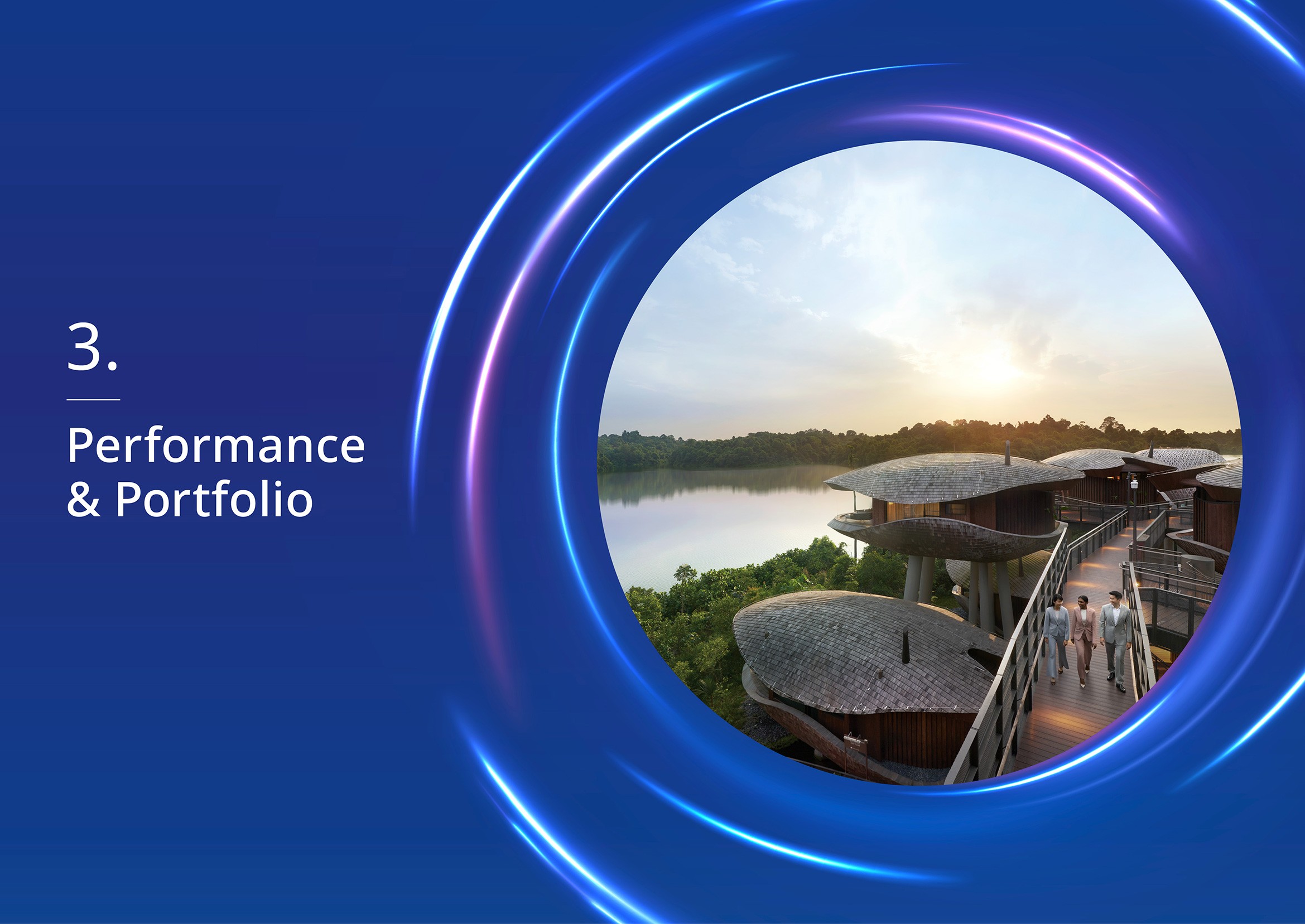
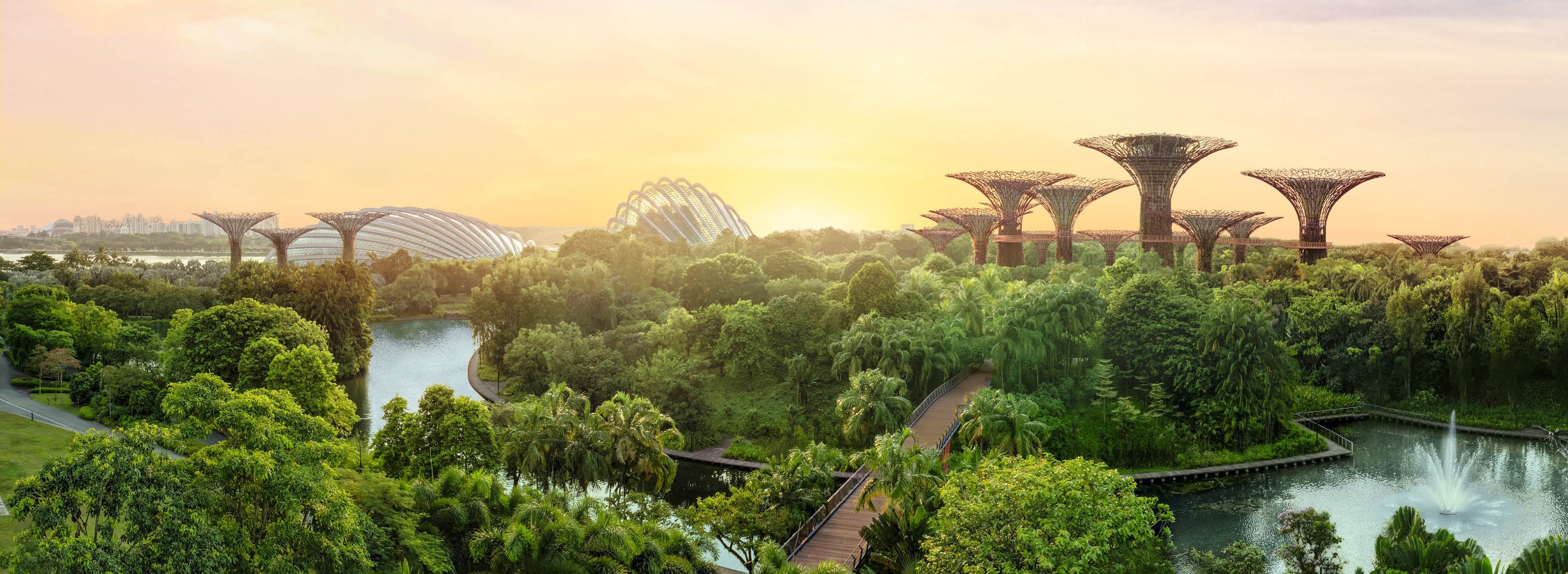
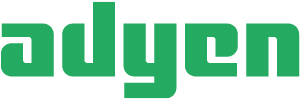



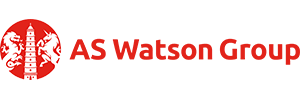
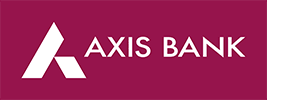
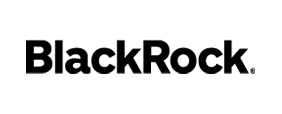
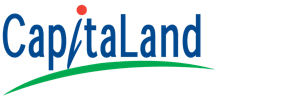
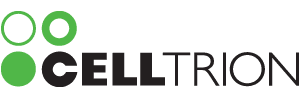




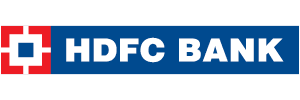
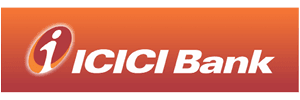

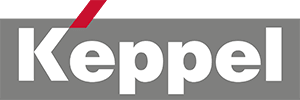

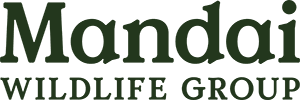
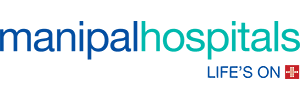
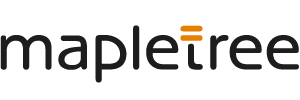

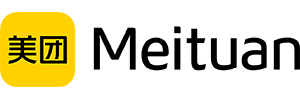
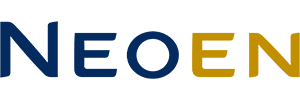
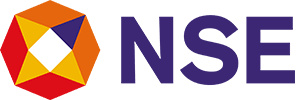


-Company-of-China-Ltd.png)




